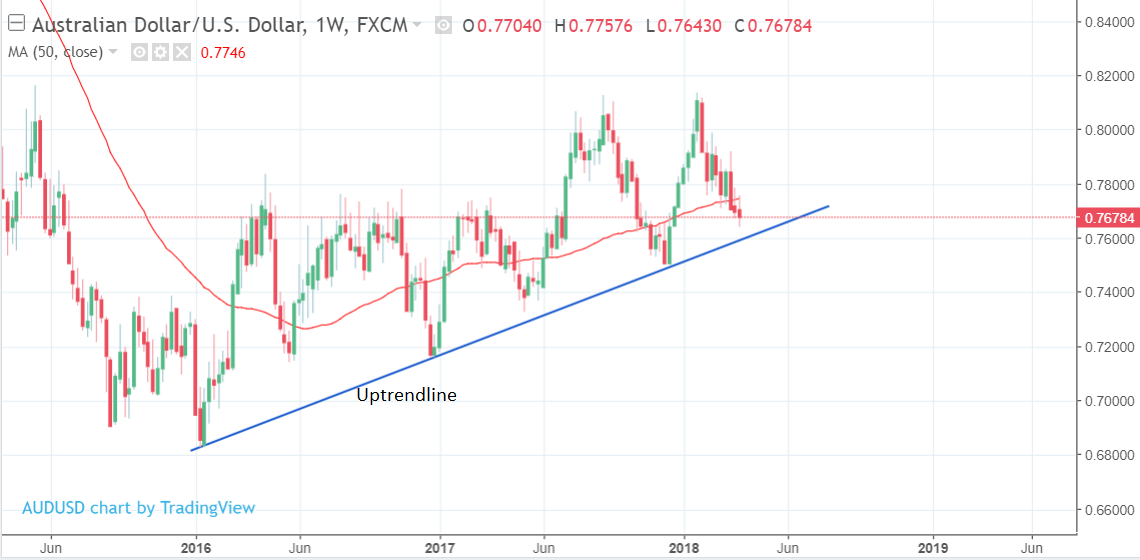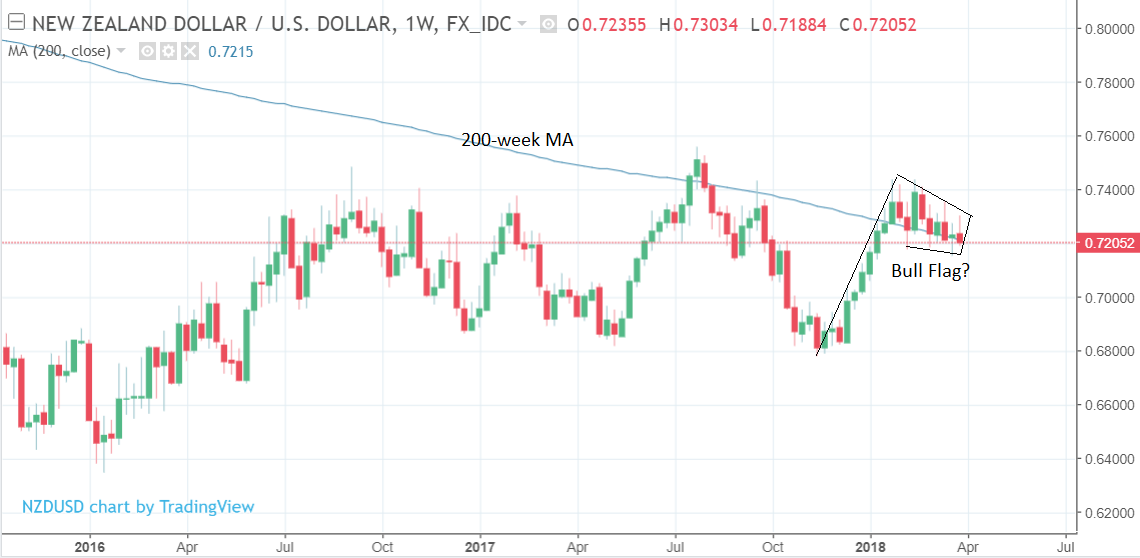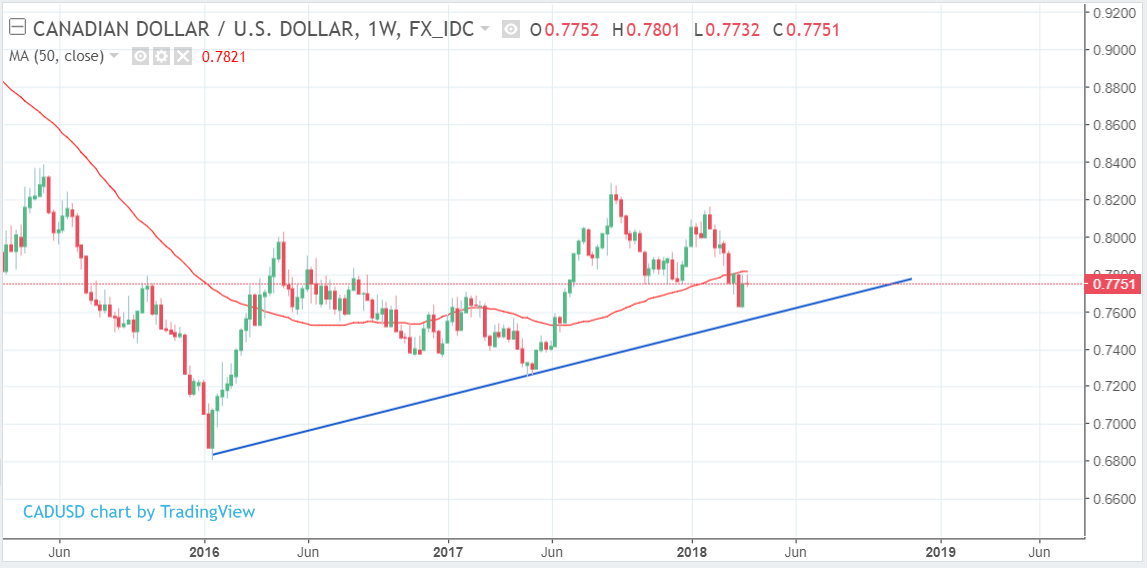Perspectives on NZD and the Broader Commodity Pack
- Current financial conditions are not conducive to commodity currencies
- All three have weakened versus the USD and are on or nearing key levels
- Analysts views on NZD crosses seen to diverge

© Andrey Popov, Adobe Stock
The so-called "commodity currencies", which include AUD, CAD and NZD have generally been portrayed as the 'fall guys' of the new financial world order.
In the new normal, in which rising interest rates, higher borrowing costs, and increased market volatility are the order of the day the commodity block have certain characteristics which put them at a disadvantage.
Broadly higher interest rates around the globe have eclipsed the advantage the 'commods' used to have when the world was deflationary. Now interest rates in the US are higher than in Australia for the first time in over a decade (1.75% vs 1.50%), and equal to those in New Zealand, so there is no advantage to investors in parking their money in the antipodes. That this previously provided the commods with a carry trade premium means they are now vulnerable to its lack.
The commodity block has also been described as 'deficit currencies' which means they tend to run high budget, trade or current account deficits which place a heavy refinancing burden on their economies. Yet the higher borrowing costs of the new paradigm are likely to make this burden more costly, further stymying growth potential in the process.
Then there are other, more idiosyncratic, characteristics which provide the basis for diverging views on the extent of their likely weakness versus the majors.
The Australian Dollar, for example, is uniquely exposed to trade war risks between China and the US as 35% of its entire trade is with China so its fate is highly dependent on its bigger neighbour. This explains why the Aussie has fallen against the New Zealand Dollar (Kiwi) recently, according to Neil Mellor, chief FX analyst at BNY Mellon .
"Australia’s particularly close association with China has been the basis for the Aussie’s malaise," says Mellor, highlighting "the double-edged sword," of headlines gyrating "between war and détente on trade."
The Canadian Dollar is also vulnerable to relations with its bigger neighbour, the US, especially with regard to NAFTA, but also in a more general 'trade-war' sense.
CAD had some good data prints in 2017, in particular, but it is more the politic-economic outlook which has weighed on the currency as it has tied governor Pollock's hands in relation to interest rates.
That the market is now too negative about CAD, is the position of analyst Richard Kelly and his team at Canadian investment bank TD securities, who recently released a recommendation to sell NZD/CAD.
For Kelly, CAD is undervalued to the tune of circa 3.0% whilst NZD "looks close to flat".
Whilst CAD's data in 2018 has not been great this is now baked into the exchange rate, yet NZD data, which has been equally poor has not, but probably will.
"NZD data momentum remains negative and has decelerated sharply from three months ago," says Mellor, who adds that the NZD screens rich compared to other commods and is overpriced according to TD's proprietory HFFV valuation model.
Yet not all analysts are negative about the Kiwi, indeed, in many ways, the opposite view to that held by Kelly is held by BNY Mellon's Mellor, who likes the cut of NZD's gib and recommends stalking the currency for an opportunity to go long.
"Whilst the NZD has spent the first quarter of the year in retreat against the USD (in keeping with the performance of commodity currencies generally), it has fared rather better than the AUD, and this particular cross is on the cusp of some interesting levels," says Mellor, who is overall bullish NZD/AUD.
He sites relief that political-economic fallout from the election was not as bad as had been feared. The new government was not as bold in their reforms of the RBNZ and despite a nationalistic foreign policy on immigration and inbound investment, the damage to growth prospects was offset by a generous budget.
"The seeds of the Kiwi’s recovery were sewn in mid-November when finance minister Grant Robertson spoke of “continuity” and “stability” for the RBNZ’s policy target, thereby disabusing the market of its worst fears," says Mellor.
These reversals aside, it remains to be seen which of the commods fairs better than the others.
The perplexing paradox of a bearish NZD/CAD recomendation beside a bullish NZD/AUD call remains difficult to resolve, but where there is a consensus is in the view that all three look vulnerable against USD.
Mellor, himself notes how AUD/USD is nearing a key uptrend line which if broken will almost certainly start a landslide lower, and he goes on to mention how the 200-week moving average appears to be propping up NZD/USD like the crutch in a Dali painting; and despite the possibility it could be forming a bullish flag (see chart below) our conviction is not strong.
Finally, CAD/USD too, is nearing a key trendline which if broached would open the floodgates and see heavy selling, so whilst we cannot say whether NZD will strengthen or weaken in its crosses we note vulnerabilities in all USD pairs.
Get up to 5% more foreign exchange by using a specialist provider to get closer to the real market rate and avoid the gaping spreads charged by your bank when providing currency. Learn more here.







